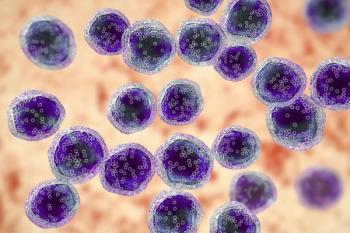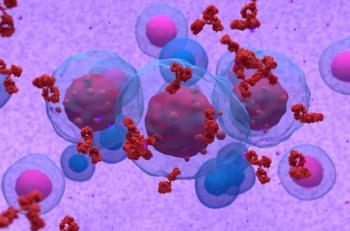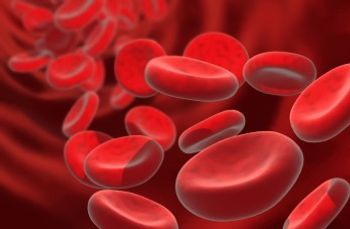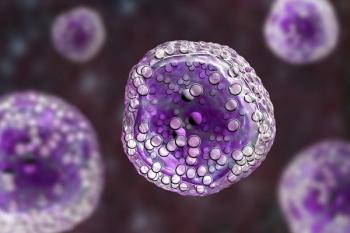
Hyperdiploidy Adverse Prognostic Factor in Smoldering Multiple Myeloma
The results of a univariate analysis have shown that the presence of hyperdiploidy and chromosomal aberrations del(17p13), t(4;14), and +1q21 are all associated with shorter time to progression from smoldering multiple myeloma to active disease.
The results of a univariate analysis have shown that the presence of hyperdiploidy and chromosomal aberrations del(17p13), t(4;14), and +1q21 are all associated with shorter time to progression from smoldering multiple myeloma to active disease.
Although these high-risk aberrations are also predict adverse outcomes in patients with symptomatic multiple myeloma, “hyperdiploidy is the first example of an adverse prognostic factor in smoldering multiple myeloma that has opposite predictiveness in active myeloma,” wrote researchers led by Kai Neben, MD, of the University of Heidelberg, Germany.
The results come from a study designed to examine chromosomal aberrations in patients with smoldering multiple myeloma. Neben and colleagues used interphase fluorescent in situ hybridization to assess eight chromosomal abnormalities in 248 consecutive patients with smoldering multiple myeloma. The results of the analysis were
During the time of the study, 83 patients progressed to active disease and five to amyloid light-chain amyloidosis. Median time to progression was 5.6 years.
Chromosomal aberrations were detected in 91% of patients in the study. Del(17p13) was found in 6.1% of patients with smoldering myeloma; t(4;14) in 8.9% of patients; and +1q21 in 29.8% of patients.
Presence of these aberrations adversely affected time to progression. Of patients with del(17p13) 56% had progressed at 3 years compared with 30% who did not have the abnormality (P = .001). Similarly, a larger percentage of patients with t(4;14) abnormality (55% vs 28%; P = .003) and the +1q21 abnormality (43% vs 27%; P = .02) progressed at 3 years compared with patients without those abnormalities.
Hyperdiploidy was present in 43.3% of patients with smoldering disease. In these patients, hyperdiploidy was associated with decreased time to progression (HR = 1.67; 95% CI, 1.33-3.91), contrary to what is seen in patients with active disease.
When the researchers used the Kyle model to define tumor load, 67% patients with high tumor load had progressed at 3 years compared with 23% of patients in the low tumor mass group (P < .001). In addition, those patients with a proportion of malignant plasma cells greater than 95% also had a significantly worse 3-year survival rate compared with patients with 95% malignant plasma cells or less (67% vs 23%; P < .001).
“Risk association of chromosomal aberrations is not only a priori treatment dependent (predictive) but is also an intrinsic property of myeloma cells (prognostic),” the researchers wrote. “These aberrations help identify patients with faster progression to symptomatic myeloma and should be assessed in all patients with smoldering multiple myeloma.”
Newsletter
Stay up to date on recent advances in the multidisciplinary approach to cancer.


















































































